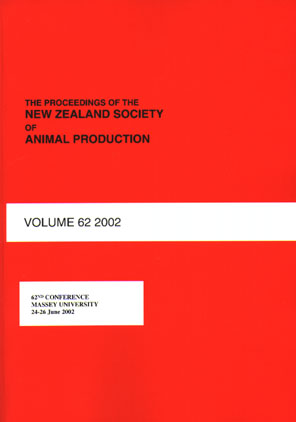Abstract
The objective of this study was to evaluate whether the provision of greater access to watering sites two weeks prior to lambing and at least one week after lambing impacts lamb survival and growth to weaning, using triplets as a model. Triplet-bearing ewes (n=206, 116-131 days gestation) were randomly allocated to either the control (one water trough/paddock) or treatment group (2-3 water troughs/paddock) balanced for ewe live weight, body condition score and stage of gestation, at a stocking density of 8.6-9.1 ewes/ha with three replicated paddocks/treatment. Lamb survival was determined via DNA parentage and lamb growth recorded at docking, weaning and at six months of age. Lamb survival (60 vs 62%, P=0.690) and lamb growth (P=0.452) did not differ between the treatment and control groups. The key finding of this study was that increasing the availability of a water supply to triplet-bearing ewes in late pregnancy and early lactation did not influence lamb survival or growth. Keywords: sheep; triplets; water; lamb survival
New Zealand Journal of Animal Science and Production, Volume 80, Online, 45-50, 2020
| Download Full PDF | BibTEX Citation | Endnote Citation | Search the Proceedings |

This work is licensed under a Creative Commons Attribution-NonCommercial-NoDerivatives 4.0 International License.

